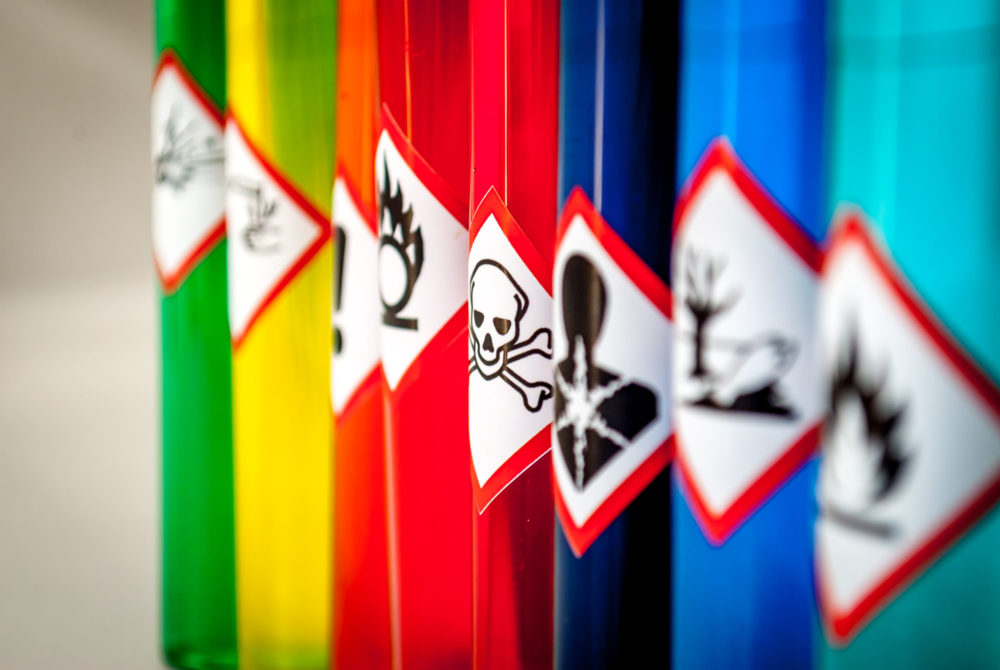Eligible for a Firefighting Foam lawsuit?
Chemical Manufacturers Hid PFAS Exposure Risks Using Deceptive Tactics, Study Warns
Researchers found industry documents which revealed manufacturers manipulated science and hid PFAS exposure risks from the public.

A recent review of once-hidden internal documents suggest that the chemical industry has intentionally hid the risk of cancer and other ailments associated with PFAS (per-and polyfluoroalkyl substances), which have become more commonly known as “forever chemicals”, since they are known to persist and build up in the environment, leading to widespread water contamination in communities throughout U.S..
PFAS were first introduced into the manufacturing industry in the 1940’s, because of their ability to resist heat, grease, stains, and water. However, the chemicals are known to persist in the environment and human body for decades, posing a variety of serious side effects, including cancer, liver damage, thyroid disease, decreased fertility, high cholesterol, obesity, hormone suppression, and other health risks.
While PFAS chemicals have been widely used in a number of consumer products, including food packaging wrappers, non-stick pans and other consumer products, most of the tap water contamination problems stem from high levels of the chemicals in aqueous film-forming foam (AFFF), which has been used by firefighters during training and responses exercises, especially around airports and military bases.
As a result of heath risks associate with exposure, PFAS water contamination lawsuits are being filed by individuals living in many areas of the U.S., claiming they developed ulcerative colitis or cancer from high volumes of PFAS chemicals being dumped into the ground water surrounding chemical manufacturing plants and around military bases, airports and other training facilities.
In recent years, hundreds of firefighting foam lawsuits have also been filed by former civilian and military firefighters diagnosed with various forms of cancer after direct exposure to the chemicals, and a number of municipal water systems are also pursuing claims against the chemical manufacturers over clean-up costs.

Firefighting Foam Lawsuits
Lawyers are reviewing aqueous film forming foam (AFFF) lawsuits for firefighters, military personnel and individuals who developed cancer or other health issues from exposure to toxic firefighting foam chemicals.
Learn More About this Lawsuit SEE IF YOU QUALIFY FOR COMPENSATIONIn a study published in the Annals of Global Health last month, researchers from the University of California, San Francisco, found that the chemical industry knew PFAS chemicals were extremely toxic as early as the 1970s, but did not warn the public health community for another 40 years.
The researchers came to their conclusions after they were able to review a collection of industry documents which had previously been secret at the UCSF Chemical Industry Documents Library. They discovered manufacturers had used various strategies to manipulate the science around PFAS chemicals, and hid what they really knew in the same way that the tobacco industry once hid its knowledge of the health risks of smoking.
“Our review of industry documents shows that companies knew PFAS was ‘highly toxic when inhaled and moderately toxic when ingested’ by 1970, forty years before the public health community,” the researchers determined. “Further, the industry used several strategies that have been shown common to tobacco, pharmaceutical and other industries to influence science and regulation – most notably, suppressing unfavorable research and distorting public discourse.”
The researchers warned that a lack of transparency throughout the chemical industry has far ranging impact on law, politics, and public health.
“Industry strategies to suppress scientific research findings or early warnings about the hazards of industrial chemicals can be analyzed and exposed, in order to guide prevention,” the researchers concluded.
EPA Plans New PFAS Exposure Limits for Drinking Water
The study comes as the U.S. Environmental Protection Agency (EPA) is now proposing new drinking water standards for some PFAS, after the agency finally acknowledged the chemicals needed to be more strictly regulated.
The new regulations consist of non-enforceable, health-based Maximum Containment Level Goals (MCLGs) the EPA will urge drinking water systems to meet, as well as Maximum Containment Levels (MCLs), which will be enforceable.
The Safe Drinking Water Act requires the EPA to put an MCL in place if it determines a substance may have adverse health effects in public water systems, and if there is a meaningful opportunity to reduce the health risks for people drinking that water. The EPA has determined all of those standards are met by the affected PFAS chemicals.
July 2023 PFAS Water Contamination Lawsuit Update
Last month, 3M Company confirmed it had agreed to pay up to $12.5 billion to cities and communities nationwide to settle thousands of PFAS water contamination lawsuits brought by municipalities. However, manufacturers of PFAS chemicals still face hundreds of firefighting foam lawsuits nationwide, brought by individuals diagnosed with cancer after drinking contaminated water or direct exposure to the chemicals during their careers as either military or civilian firefighters.
In late May, the parties were directed to select 28 personal injury claims for a second bellwether pool, involving plaintiffs who say they were exposed to AFFF through drinking water contamination, which will be scheduled for early trial dates to help gauge how juries are likely to respond to certain evidence and testimony that will be repeated throughout the litigation.
These cases will include eight kidney cancer claims, eight testicular cancer claims, eight thyroid disease claims and four ulcerative colitis claims. In addition, they will be limited to individuals alleging they were exposed to contaminated water near Peterson Air Force Base, Colorado Springs Municipal Airport, the Willow Grove Naval Air Station Joint Reserve Base and the Naval Air Warfare Center in Warminister.
The outcome of these early bellwether trials will not have any binding impact on other claims. However, if they proceed, it is expected that the amount of any AFFF lawsuit payout awarded by juries may influence PFAS water contamination settlements and future firefighter cancer negotiations as well.






0 Comments